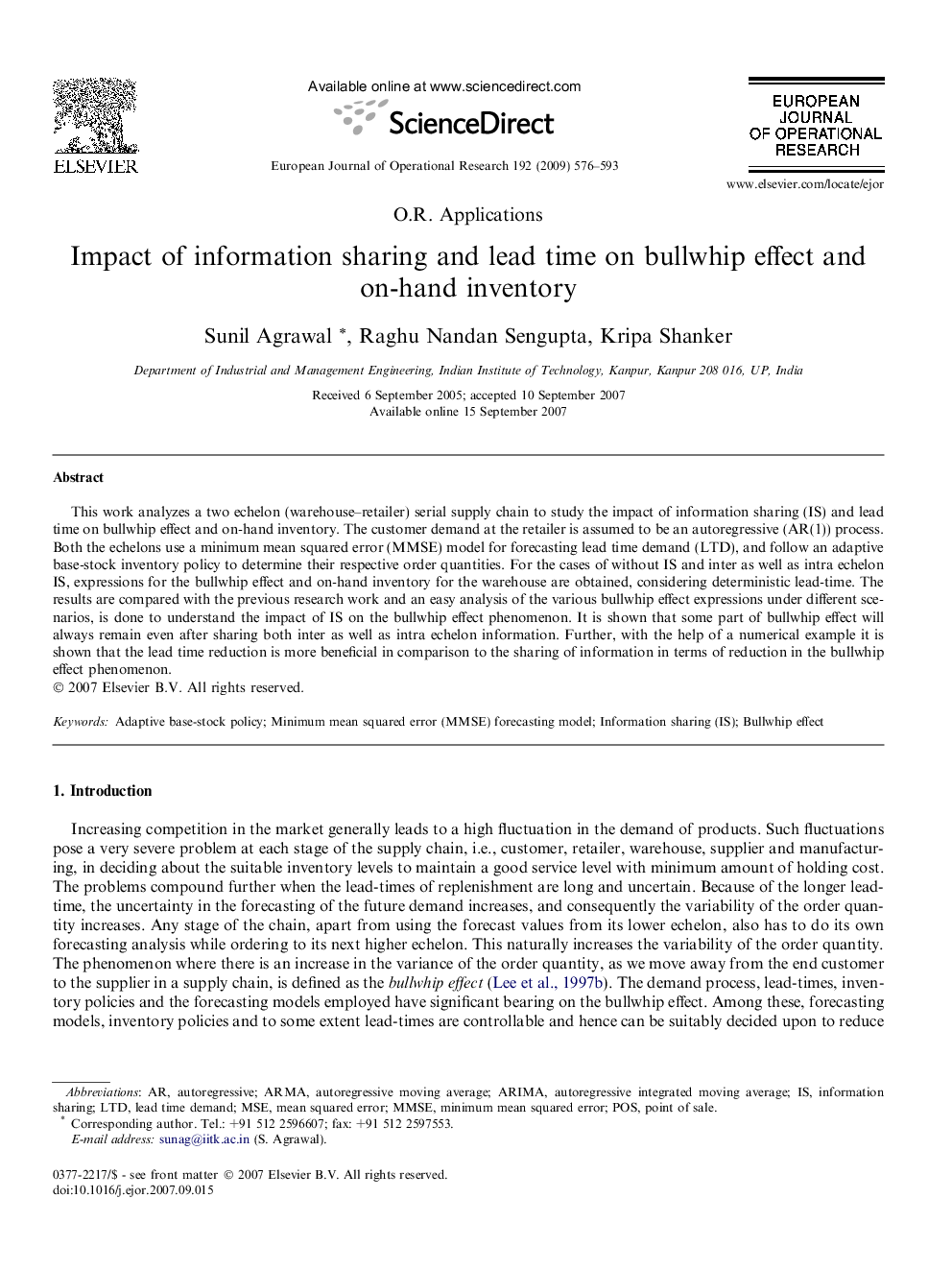| Article ID | Journal | Published Year | Pages | File Type |
|---|---|---|---|---|
| 481193 | European Journal of Operational Research | 2009 | 18 Pages |
This work analyzes a two echelon (warehouse–retailer) serial supply chain to study the impact of information sharing (IS) and lead time on bullwhip effect and on-hand inventory. The customer demand at the retailer is assumed to be an autoregressive (AR(1)) process. Both the echelons use a minimum mean squared error (MMSE) model for forecasting lead time demand (LTD), and follow an adaptive base-stock inventory policy to determine their respective order quantities. For the cases of without IS and inter as well as intra echelon IS, expressions for the bullwhip effect and on-hand inventory for the warehouse are obtained, considering deterministic lead-time. The results are compared with the previous research work and an easy analysis of the various bullwhip effect expressions under different scenarios, is done to understand the impact of IS on the bullwhip effect phenomenon. It is shown that some part of bullwhip effect will always remain even after sharing both inter as well as intra echelon information. Further, with the help of a numerical example it is shown that the lead time reduction is more beneficial in comparison to the sharing of information in terms of reduction in the bullwhip effect phenomenon.
